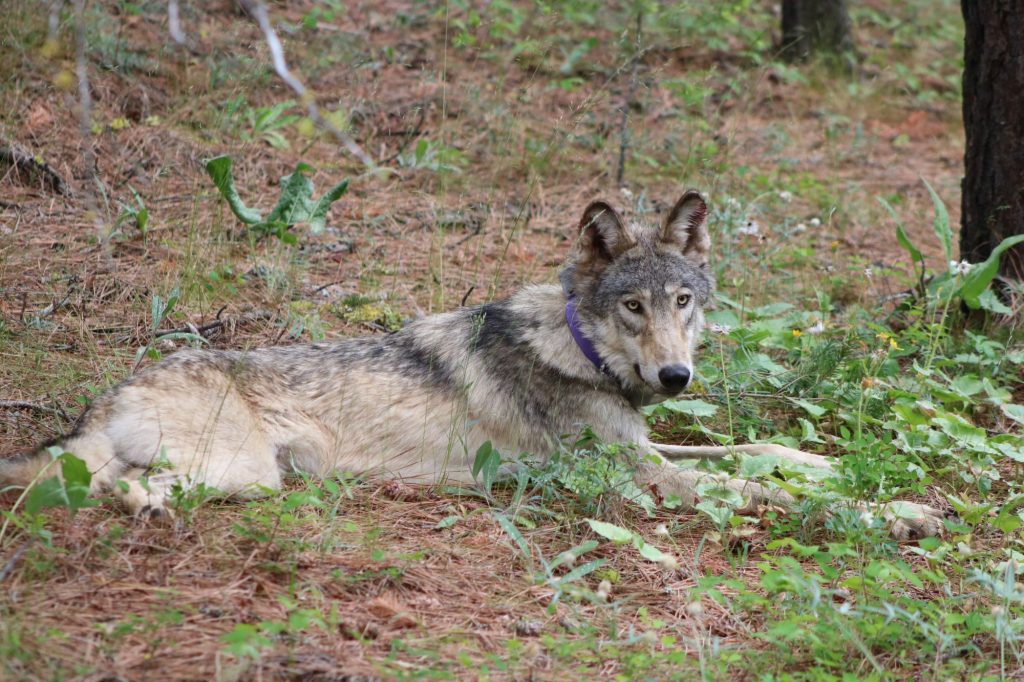HAILEY, Ida. –Today, ForestWatch and a coalition of 70 conservation, Indigenous, and animal welfare groups filed a formal petition with the U.S. Fish and Wildlife Service to re-list the gray wolf as an endangered species throughout the American West under the Endangered Species Act. The groups cited inadequate protections and a lack of minimum viable populations of wolves in California and all other western states. The re-listing petition comes in the wake of draconian new laws passed in Idaho and Montana to radically reduce wolf populations below biologically appropriate levels.

“Wolves have been extinct in California since the 1920s and are entirely missing from the landscape or perilously close to extinction in other western states,” said Los Padres ForestWatch director of advocacy Rebecca August. “In the lands surrounding Yellowstone National Park, where there has been a decades-long effort to reestablish gray wolves, states have revoked hunting and trapping regulations, advancing the possible extermination of these animals.”
The gray wolf (Canis lupus) was first listed under the Endangered Species Act in 1974 when there were just 1,000 individuals left in the lower 48 states. Last year, with populations hovering around just 6,000, the Trump administration stripped federal protection, a move that many critics said was premature and reckless.
The listing petition highlights scientific findings of multiple threats facing wolves in the West, including unregulated hunting in several states, poaching, genetic problems associated with low population levels, fragmented habitats, and disease outbreaks that strike at random and have the potential to reduce populations below critical thresholds. It calls upon the U.S. Fish and Wildlife Service to protect wolves in the West as a Distinct Population Segment.
The gray wolf is native to California and has been listed under its endangered species act since 2014. There has been no effort to reestablish wolves in the state, but several individuals have migrated south from Oregon and three wolf packs have been identified in northern California. The Beckwourth Pack was reported in Plumas County as recently as June.
In April of this year, a male yearling known as OR-93 was the first wolf to appear on the Central Coast in a century, having traveled around 1,000 miles from his home with the White River pack in northern Oregon. Tracked by U.S. Fish and Wildlife through a radio collar fitted in 2020, OR-93 entered California in January and February in Modoc County and began his journey southward. In March, the young wolf, followed by a growing fanbase on Facebook and Instagram, crossed Highway 99 and Interstate 5 in San Benito County. His last collar transmission was from San Luis Obispo County on April 5th. His status is currently unknown.
“The wolf known as OR-93’s spectacular journey from Oregon to California’s Central Coast—until wildlife officials were no longer able to track his location—demonstrated that not only is there potential for gray wolves to once again call California home but that the species is in urgent need of better protections across its range,” said Los Padres ForestWatch conservation director Bryant Baker.
The groups’ petition comes in the wake of a groundswell of public recognition that wolves deserve to be listed under the Endangered Species Act, and that certain anti-conservation state governments are actively undermining wolf recovery in the lower 48 states. Over 120 Indigenous tribes and groups signed a wolf treaty calling for federal protection, and a documentary short film by the Global Indigenous Council highlighting the cultural importance of wolves to Indigenous peoples was recently released.
Wolves are considered a keystone species, meaning their disappearance can have consequences that cascade throughout an ecosystem to which they are native. One major benefit of robust wolf populations is natural regulation of populations of elk, deer, and other large mammals. For example, wolf reintroduction in the Yellowstone area, which began in the 1930s, has reduced the regional coyote population by 50%, increased riparian areas that had been damaged by overgrazing, and has markedly increased biodiversity and stabilized the ecosystem.
“As our region’s wildlife are under the increasing pressure of a changing climate, re-establishing the balance that the grey wolf once brought to the landscape will give our ecosystems a fighting chance,” said August. “While the few wolves that have made it to California are protected, the state is no island. It’s clear that their survival here is too fragile to withstand the decimation that is taking place in other states.”
More than 400 scientists joined the call for federal wolf protections, recently bolstered by a letter from Members of Congress, signed by Congresswoman Julia Brownley, among others, asking Secretary Haaland to step in and get the wolves back under the wing of Endangered Species Act protections. Today’s formal ESA petition requires the U.S. Fish and Wildlife Service to render a formal determination, called a “90-day finding,” determining whether substantial scientific and commercial information has been presented to support reinstating federal protections. This would be the first step on the road to restoring federal protections for this ecologically important, much-loved, oft-hated, and misunderstood species.







Comments are closed.